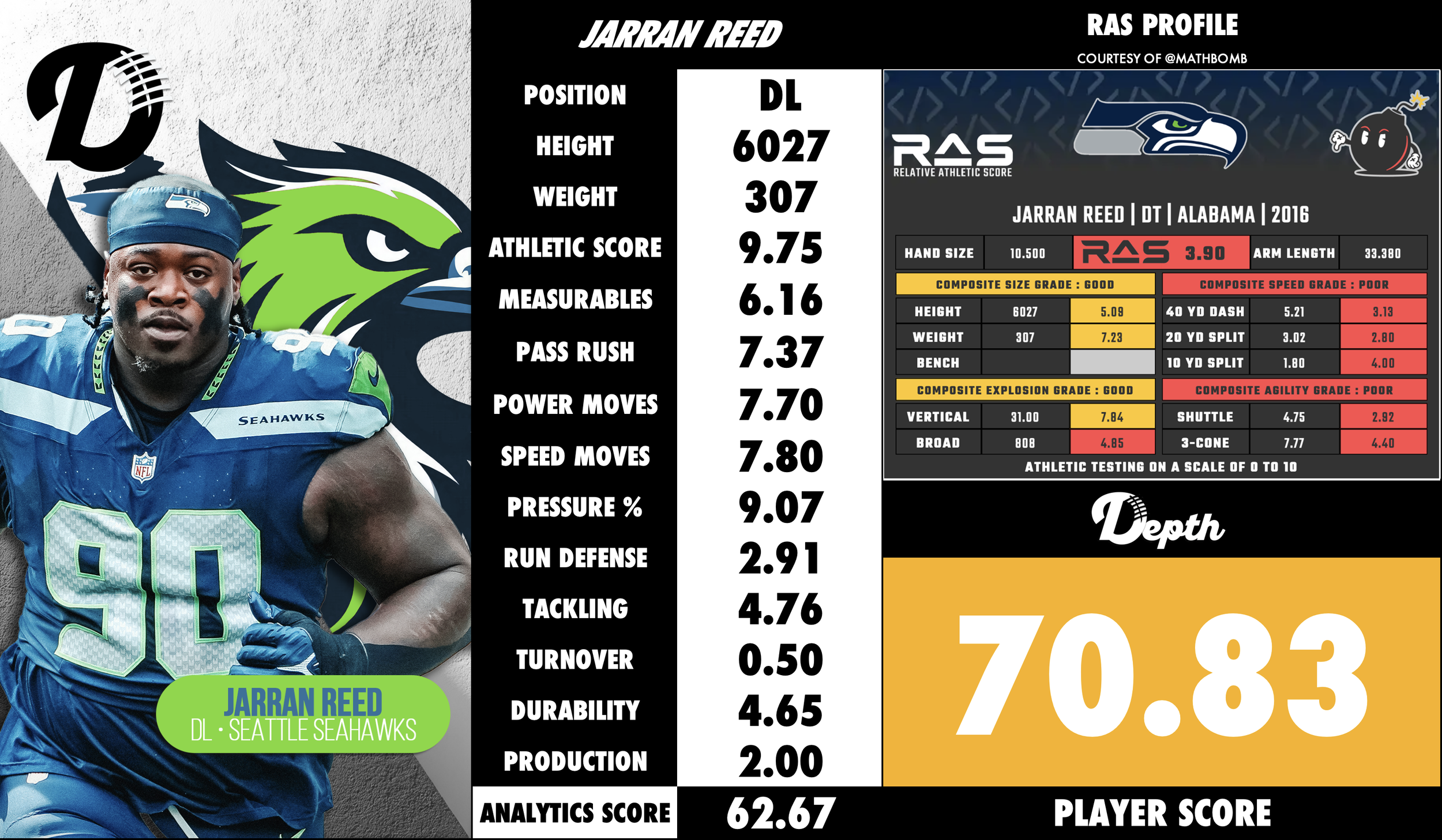
Jarran Reed
Summary
Jarran Reed was selected in Round 2 (#49 Overall) in the 2016 Draft out of University of Alabama. Reed is a physically powerful interior defensive lineman with proven ability to disrupt plays in both the run and pass game. His strengths are his power, run-stopping, and interior pass-rush ability, while weaknesses include injury history, limited versatility, and reliance on power over technical finesse. Overall, he remains a reliable, impactful defensive tackle in schemes that utilize his strengths.
Strengths
Power & Anchor: Reed uses his size and strength effectively to control the point of attack, particularly against the run. He can absorb double teams and maintain gap integrity.
Pass-Rush Ability from Interior: Despite being an interior lineman, he generates pressure on the quarterback using power moves and a quick first step. He has recorded multiple sacks in a season as a defensive tackle.
Run-Stuffing Instincts: He has a nose for the football and can disrupt run plays in the backfield, helping reduce yards after contact.
Experience & Leadership: Multiple seasons in the NFL and college success at Alabama give him knowledge of schemes and ability to mentor younger players.
Weaknesses
Durability / Injury History: Reed has had injuries that have limited his snaps in certain seasons, which raises availability concerns.
Consistency vs. Quickness: Occasionally struggles against faster, more agile offensive linemen due to a heavier, power-based style. This can reduce effectiveness in space.
Limited Versatility: Primarily an interior lineman; not often used effectively outside of defensive tackle positions or in edge situations.
Pass-Rush Technique Depth: While strong, his arsenal is largely based on power and less on finesse or multiple counter moves, which can limit his ceiling against elite offensive linemen.
Fit & Outlook
Jarran Reed fits as a three-down defensive tackle in schemes that value interior power and gap control. He thrives as a run-stopper and can collapse the pocket from the inside, which benefits teams employing 4-3 or hybrid fronts. In Seattle’s defense, he is expected to provide veteran presence, disrupt run games, and generate interior pressure. Going forward, Reed’s production depends on maintaining health and consistency; if he stays durable, he can continue as a key interior lineman capable of impacting both run and pass defense.


